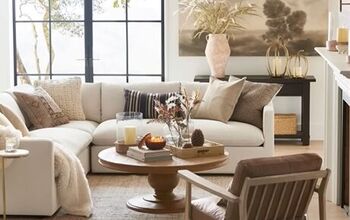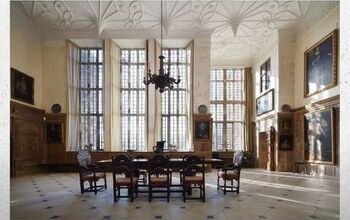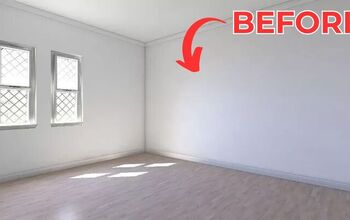10 Bedroom Design Mistakes to Avoid and What to Do Instead

If there's a room that affects our health and well-being more than any other, it has to be the bedroom. We spend many hours there rejuvenating our bodies so we can make the most of our waking hours.
The goal in designing this space is to create a relaxing atmosphere that allows us to rest, renew, and recharge. However, some design mistakes can interfere with that goal.
Let's take a look at 10 of these mistakes and what we can do instead to create a cozy, restful retreat.
Table of contents
- Mistake 1: Cluttered and Messy Room
- Mistake 2: Bright Colors
- Mistake 3: Too Much Exterior Light
- Mistake 4: Centrally Located Light Fixture
- Mistake 5: Bed Placement
- Mistake 6: Improper Rug Placement
- Mistake 7: Matching Furniture Sets
- Mistake 8: Matching Bedding Sets
- Mistake 9: Too Many Pillows
- Mistake 10: Lack of Plants
Mistake 1: Cluttered and Messy Room
Nothing interferes with relaxation like a messy and cluttered room. All that chaos makes the space uninviting and reminds us of things yet to be done, which can get our minds racing and make it hard to rest.
Establish a functional and inviting space by removing clutter, including visual clutter, and creating a serene atmosphere. Keeping it simple will create a functional and stress-free environment that supports comfort and well-being for a rejuvenating nightly rest.
Layer the things you need and love thoughtfully and intentionally so that the space looks and feels cozy but not overstuffed.
Mistake 2: Bright Colors
Bright colors of any hue, but especially red, orange, and yellow, can lead to visual overload and create a room that's overly stimulating.
Set a restful tone for your bedroom with light or dark neutrals or soothing muted tones of blue and green.
These colors help create a calm, comfortable, and relaxed feel for the best sleep and relaxation.
Keep in mind that light colors with a light reflectance value (LRV) of 50 or above will reflect light, making the room brighter.
If you go with a darker color with an LRV below 50, you'll create a moodier feel and avoid reflected light.
Very dark shades of black, charcoal, and navy can also create a cozy yet dramatic feel.
Mistake 3: Too Much Exterior Light
Light entering our rooms at night can interfere with our sleep by making it more difficult to fall asleep, stay asleep, or sleep as deeply as we would in a dark room.
Our circadian rhythms are regulated by exposure to light and darkness, and sleeping in a dark room helps to regulate these rhythms.
Adding drapery, shades, or both will help darken the room for the best sleep and also add softness and acoustical comfort. Consider blackout curtains and shades for maximum light control.
Mistake 4: Centrally Located Light Fixture
Many bedrooms have a centrally located light fixture, which can cause glare and cast unflattering shadows, especially when it's the only light fixture in the room. So, what do we do with that junction box?
A chandelier or pendant that coordinates with your decor is a great choice, but choose one that provides mostly diffuse and indirect light, with light sources that are shaded and light that is reflected off of ceilings or walls.
Opt for a warm white or amber color temperature of 2700 Kelvin or less and install a dimmer switch.
Layer in several other light sources, including bedside lighting and table or floor lamps, in the same color temperature. This layered approach to lighting will create a serene and calming space.
Mistake 5: Bed Placement
Sleeping with our backs or sides to the door makes us subconsciously feel vulnerable to attack.
According to feng shui, the ancient Chinese art of arranging spaces to achieve harmony and balance, bed placement is key for inviting the proper energy for a good night's sleep.
The best position for the bed is across from, but not directly in front of, the entry door. This places you in the feng shui commanding position or power position so that you have a clear view of the door when you're in bed, allowing you to fully relax and get better rest.
Another reason to place the bed this way is that the bed, along with the wall behind it, is usually the natural focal point of the room.
Mistake 6: Improper Rug Placement
For rooms with hard floors, a rug under the bed adds warmth and texture and makes the room feel complete, but only if it's adequately sized and properly placed.
Choose a rug large enough to go completely under the bed and nightstands, or about two-thirds under the bed, stopping short of the nightstands and extending 24 to 28 inches (about 60 to 70 cm) on each side of the bed.
Choosing an adequately sized rug will help make the room feel larger as well.
Mistake 7: Matching Furniture Sets
Matching furniture sets make selection fast and easy, but they can make a bedroom look generic and one-dimensional. Instead, look for pieces that complement each other but offer some nuance in material, style, or era.
Express your personality by incorporating items you already own or buy vintage pieces and mix them with some new pieces.
This will give the room personality and the feeling that it evolved organically.
Mistake 8: Matching Bedding Sets
Matching bedding sets create the same situation as matching furniture sets. Bedding sets made with all the same colors and fabrics, even if they're different patterns, feel unoriginal.
If you like a particular set, you could break it up and use it in multiple rooms. Then layer in a mix of coordinating linens, pillows, and throws that complement each other but don't match exactly.
This will give a layered and thoughtful look to the room and create visual interest.
Mistake 9: Too Many Pillows
Too many pillows on the bed are visually overwhelming and create an unsustainable ritual of removing and replacing pillows nightly. A good guideline is to have no more than a quarter of the length of the bed covered with pillows.
This will give the room an uncluttered and layered look and ensure that removing and replacing the pillows on the bed doesn't become an unpleasant chore.
Mistake 10: Lack of Plants
Not having plants in the bedroom is a missed opportunity to bring in the calming effects of nature and the health-enhancing benefits plants can provide.
Many plants absorb carbon dioxide and emit oxygen at night, enhancing the quality of the air as we sleep. Adding organic elements like plants creates a peaceful atmosphere with a soothing touch of nature.
Please share your thoughts in the comments on the bedroom design mistakes and the tips for how to fix them.
For details of some of the products shown and mentioned, check out the video description box here.



















































Comments
Join the conversation